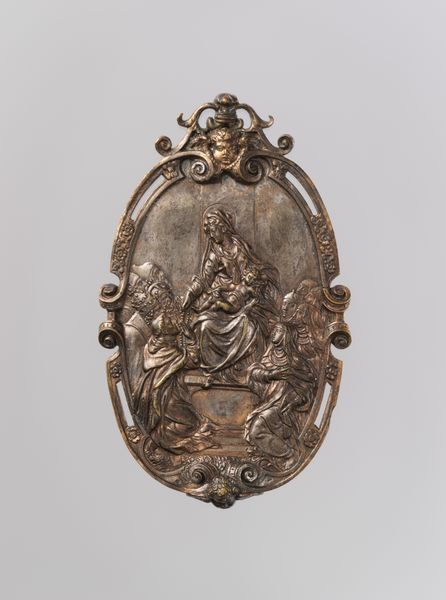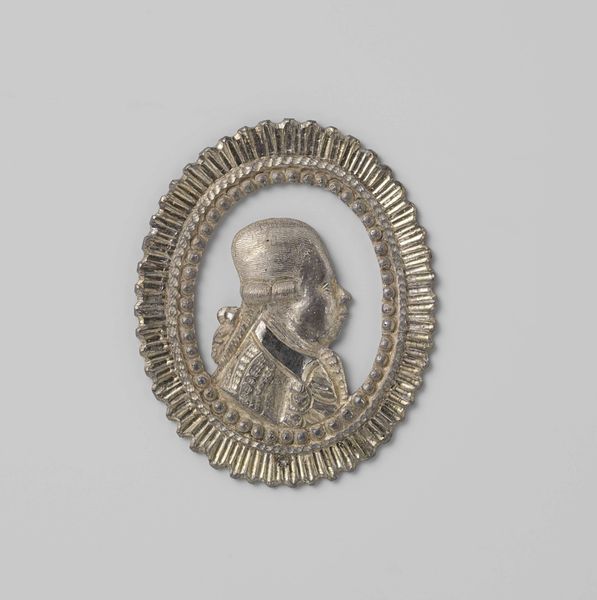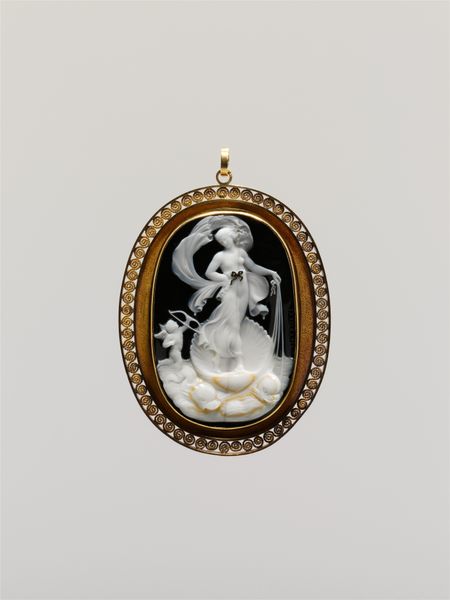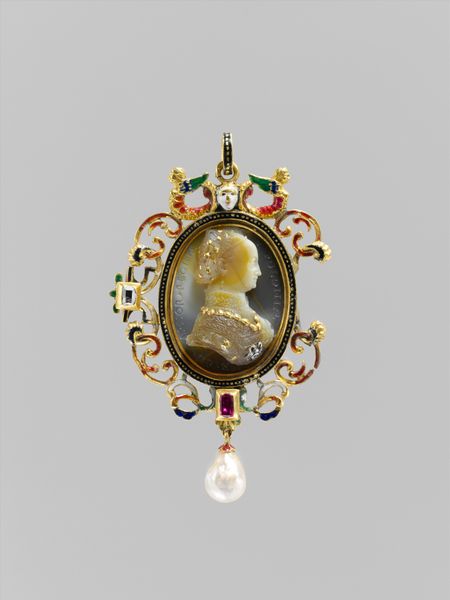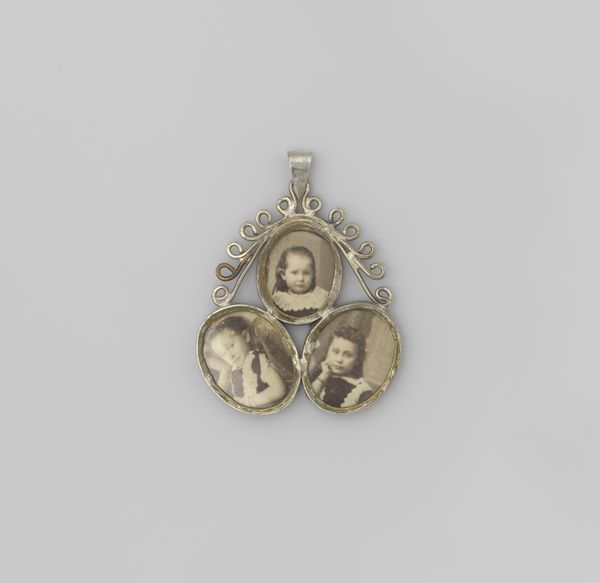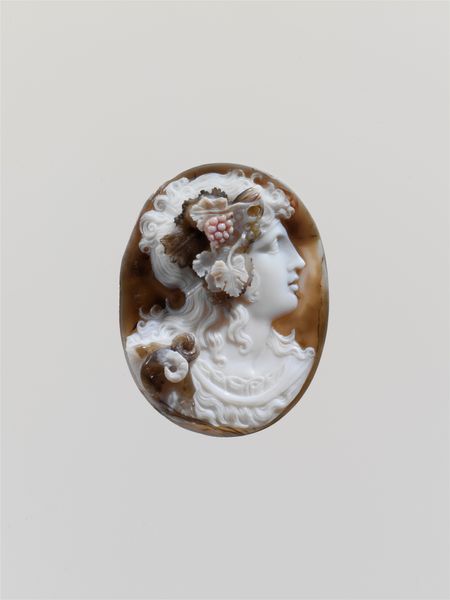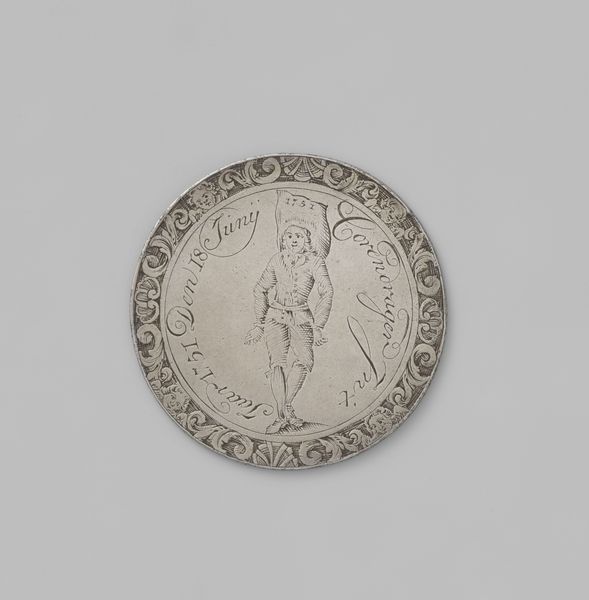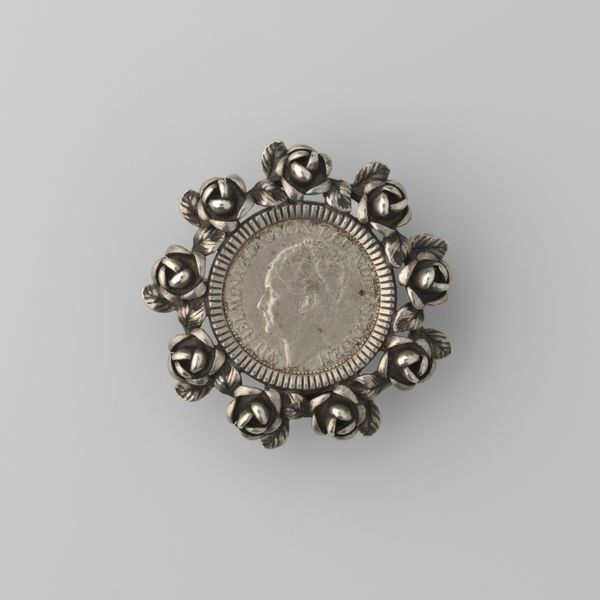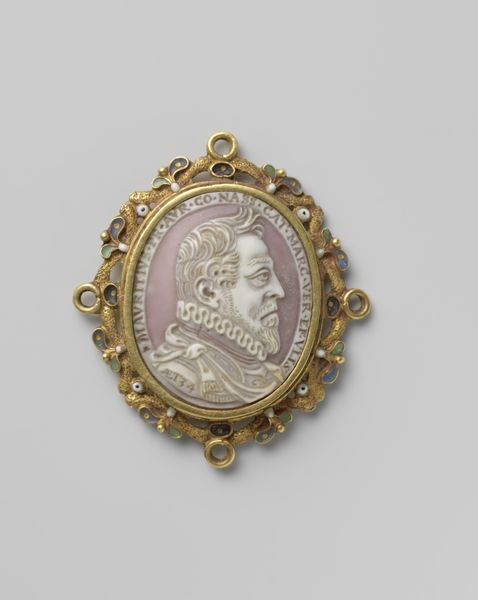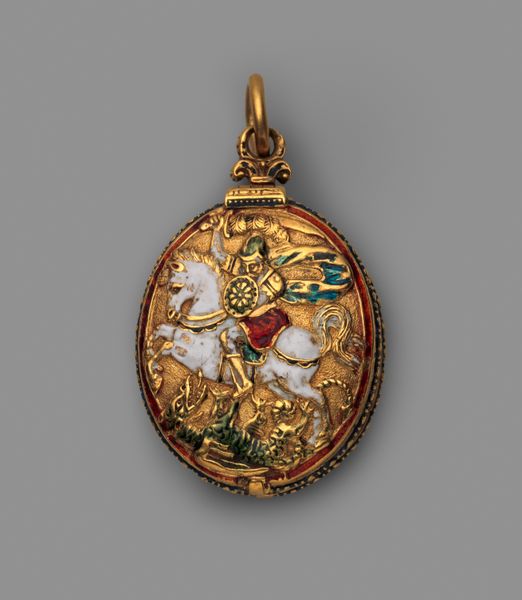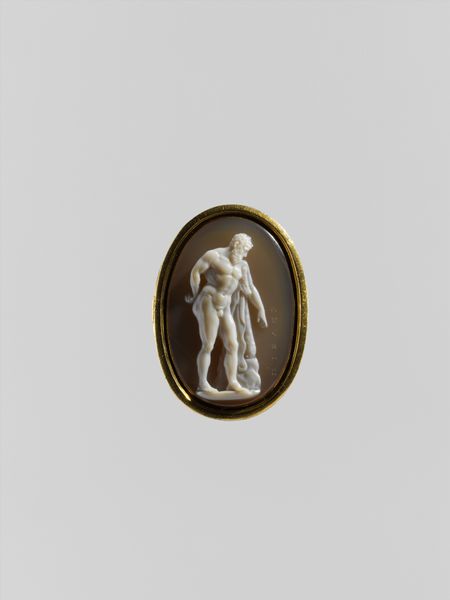
metal, sculpture
#
portrait
#
baroque
#
metal
#
jewelry design
#
sculpture
#
history-painting
#
miniature
Dimensions: height 3.7 cm, width 3.0 cm
Copyright: Rijks Museum: Open Domain
Curator: Here we have an intriguing piece, a pendant created in 1614 by Jan de Vos. It’s crafted from metal, showcasing a portrait of Emperor Matthias. What's your first take? Editor: Well, instantly, I see power frozen in miniature. The oval frame, the meticulous detailing – it's like holding a little echo of baroque authority, but somehow intimate too. It’s hard to believe this dates back to the 17th century. Curator: It’s compelling, isn't it? This wasn’t just a decoration; it served as a kind of wearable propaganda. Matthias needed to solidify his image and demonstrate his claim to the throne, and these medallions were like mass-produced endorsements, ensuring his likeness circulated. Editor: That's fascinating. It reminds me of Roman coinage, the way an Emperor’s head on a tiny piece of metal could imprint an empire. In this pendant, though, the decorative frame feels almost…defensive? As if needing to protect this potent image. It really demonstrates his importance. Curator: Perhaps it does. The Baroque style adds another layer. The elaborate frame isn’t just ornamental. It echoes the artistic sensibilities of the era, the desire for grandeur, the intricate patterns all clamoring for attention, not so dissimilar from Matthias, desperate for legitimacy. Editor: So true! This medallion tells a story, like visual DNA preserving fragments of ambition and control. Look closely: what details jump out at you and speak to his personality? Curator: I keep circling back to the precision. Consider the tiny inscription looping the border! De Vos painstakingly worked every detail on Matthias’ armour and ruff, lending this hunk of metal its undeniable heft. But mostly, the face. The Emperor, caught somewhere between resolve and vulnerability. To think it could be held and carried as a testament to sovereignty... extraordinary. Editor: Exactly. These medallions encapsulate something beyond aesthetics. They acted as potent emblems of identity, influence, and history; to observe them stirs something buried deep in our shared cultural memory, revealing our constant desire to fix identities, to broadcast claims, in whatever little form that survives through time. What a find.
Comments
No comments
Be the first to comment and join the conversation on the ultimate creative platform.
